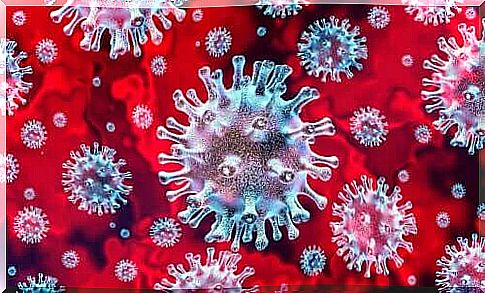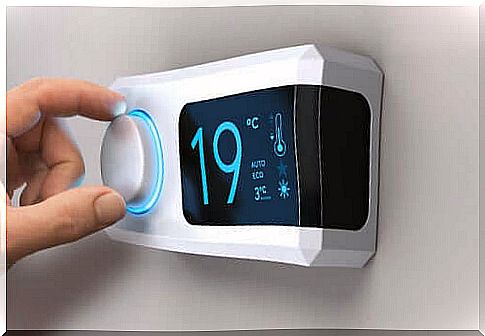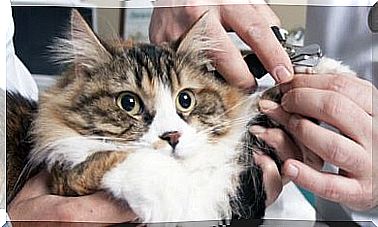Can Temperature Affect Virus Activity?

Due to current events related to SARS-CoV-2, we are beset by thousands of concerns that make us wonder what this virus is, how it is transmitted, or what we can do to avoid becoming infected. We can also ask ourselves, the more favors the activity of the virus: the cold or heat?
In 2003, there was an outbreak of coronaviruses in Hong Kong that spread to many countries. Then the scientists studied how climatic factors affected transmission.
Next, we’ll show you how temperature influences virus activity and other interesting data.
temperature and organisms
Temperature is the most important environmental factor that affects the health of all organisms, as its effects affect the growth and development of pathogenesis immediately.
Temperature changes can affect both host and parasite (virus) biology. In fact, the impact of climate change is related to numerous infectious diseases.
Some of the deadliest outbreaks of viral infectious diseases are Ebola, HIV and the coronavirus, which causes SARS (severe acute respiratory syndrome).
Effects of temperature
Viruses are thermolabile, that is, they are destroyed when they reach a high temperature. Therefore, most viruses are inactivated when applied at a temperature between 50-65 °C for half an hour.
This is because high temperatures cause the denaturation of the proteins that make up the capsid (protein structure that surrounds and protects the genetic material).
However, there are exceptions. For example, hepatitis B viruses are inactivated at 120 °C for 30 minutes. Or also by administering 15 lb of pressure, acting as a disinfectant, or by applying activated glutaraldehyde at 2°C.
Viruses are stable at low temperatures. At -75°C they remain active for months, while at -196°C they can remain active for years.
Next, we’ll show you how temperature affects the survival of some viruses that cause infectious diseases.
The case of the coronavirus

SARS-CoV was an emerging disease associated with severe pneumonia caused by coronavirus that spread to 20 countries on 5 continents in 2003. The outbreak erupted in Amoy Garden, Hong Kong, in an apartment building where more than 300 residents were infected.
The mortality caused was 9%, and the elderly were the most affected. In the hospital environment, the number of cases has increased due to contact between patients, health professionals and fomites (inert objects that transmit pathogens in hospitals, such as stethoscopes, masks, sheets, etc.).
Temperature and SARS
The main route of transmission of SARS-CoV infection is through respiratory droplets, which spread through the air through coughing or sneezing, better known as ‘Flugge droplets’.
According to a study published in the journal Applied and Environmental Microbiology , this virus was found on smooth surfaces and hospital objects, where it persisted for up to 28 days at temperatures between 22°C and 25°C. However, it was inactivated with the application of a temperature of 40°C.
In Advances in Virology, another article states that:
- The virus remained stable for 3 weeks at room temperature and died when a temperature of 56°C was applied for 15 minutes.
- The incidence of SARS increased on days when ambient temperatures dropped in Hong Kong and other subtropical regions.
- It was also pointed out that in Singapore, which is in a tropical area, there was a higher incidence of SARS outbreaks in hospitals due to the use of air conditioning.

Since the virus can remain active for 2 weeks in cold temperatures, which also facilitates transmission, doctors in Guangzhou decided to keep the windows open. That way the rooms were well ventilated. This meant a reduction in virus survival and transmission.
It is worth noting that in some Asian countries in tropical regions, such as Malaysia, Indonesia or Thailand, where temperatures are high, there have been no cases of SARS outbreaks.
Other environmental factors, such as wind speed, sunlight, relative humidity and air pressure, are also associated with the SARS epidemic.
What happens to other viruses
Influenza: The spread of the influenza virus (influenza) depends on both relative humidity and temperature. Thus, cold and dry conditions favor transmission, which coincides with the seasonal period of winter.
Dengue: in this case, the virus depends on the vector ( Aedes mosquito ) . At high altitudes, where temperatures are low, the virus does not complete the incubation period during the mosquito’s lifetime, so transmission is limited by the temperature of the environment.
The extrinsic incubation period occurs at a temperature of 25°C and post-infection at 30°C. These mosquitoes also transmit the chikungunya virus and the yellow fever virus. Due to climate change, this insect has already been found in different places that it usually did not frequent, allowing the uncontrolled transmission of the viruses.

In addition to temperature, there are also other environmental factors that can affect virus activity.
physical agents
- Radiations. Both ionizing radiation (X-rays) and non-ionizing radiation (ultraviolet light) cause alterations (breaks) in the nucleotide chain of the virus’ genetic material.
chemical agents
- Lipid solvents. There are viruses that have an envelope formed by a lipid double layer (enveloped viruses) and, therefore, can be easily inactivated with the use of fat solvents (chloroform, ether…). Those that do not have this envelope (naked virus) are resistant to this type of solvent, but are sensitive to oxidizing agents (hydrochloric acid and acids in general).
- pH. Viruses are very sensitive to drastic changes in pH. They remain active between a pH of 5 and 9. Below or above this range, they are inactivated.
Virus activity: temperature is a determining factor
In conclusion, temperature is a determining factor in virus viability. Most are inactivated at high temperatures, while the cold and dry climate favors their replication and transmission.
Hospital environments are considered a source of contamination because viruses and other pathogens are able to remain on the surfaces of rooms and objects. This contributes to the contamination of patients and health professionals.









